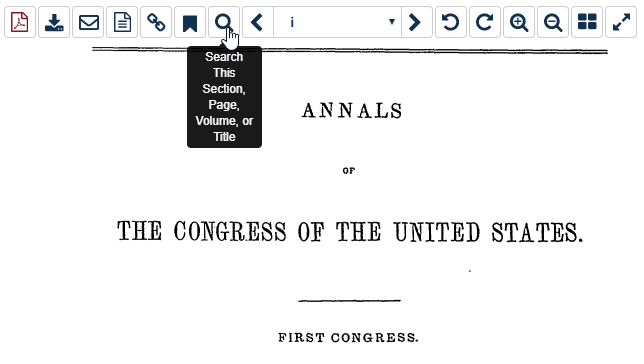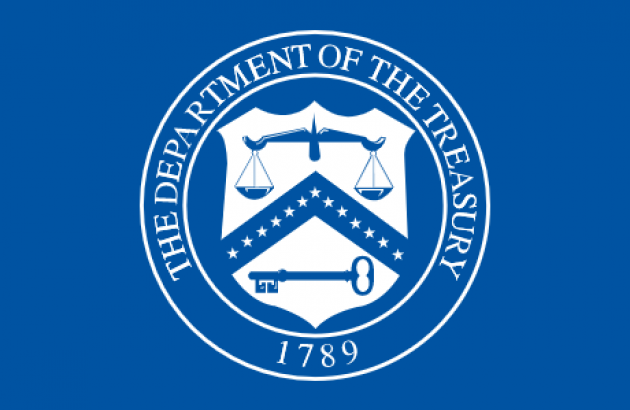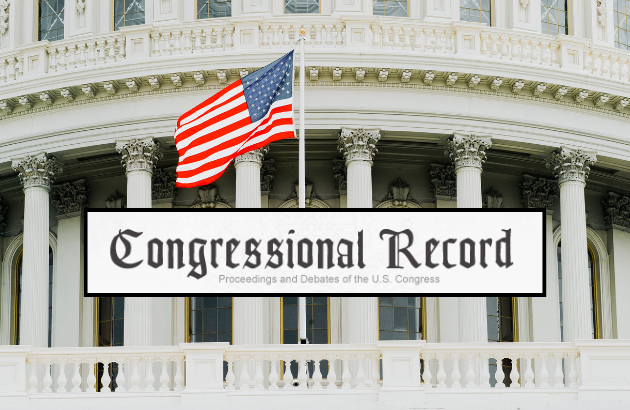Blog
Explore the History of the Treasury Department on HeinOnline
September 2, 2019 marked the 230th anniversary of the U.S. Department of the Treasury. Let's celebrate this milestone by using HeinOnline to research the beginnings of the Treasury Department.
The Treasury Department was established by an act of Congress on September 2, 1789. This act, found in the Statutes at Large (1 Stat. 65), outlines the original duties of the Secretary of the Treasury, the Comptroller, the Treasurer, the Auditor, and the Register.
Though the act provides the framework for the Department, this structure was not always agreed upon by the members of Congress. The first volume of the Annals of the Congress of the United States (found in the U.S. Congressional Documents > Congressional Record file) includes the Congressional discussion related to the organization of the Treasury Department. This discussion can be found in two ways: by searching the volume or by looking at its index. To search this volume, use the "Search this section, page, volume, or title" button found in the document navigation bar:

When the search box opens, switch the selection to "This Volume" and search for Treasury:

This will return all mentions of Treasury found within this volume.
If you are more comfortable using an index, HeinOnline provides links to the three indices found in this volume in the Contents menu on the left:

Navigate to each index of this volume to find the entries for the Treasury Department. The entry in the index to the House of Representatives suggests that much of the discussion surrounding this act came from the House:

This discussion illustrates how members of the First Congress differed in their views of what role the Department of the Treasury should take. Elbridge Gerry, the Representative from Massachusetts' 3rd District (as well as the eponym of gerrymandering and the fifth Vice President of the United States), argued for a Board of Commissioners to lead the Treasury Department, not a Secretary. In the discussions, Gerry cautions against placing control of the Department "in the hands of a single individual" (1 Annals of Cong. 384). Gerry worried that giving one person too much control could lead to embezzlement and fraud (1 Annals of Cong. 385). Ultimately, Gerry did not have the support of his fellow members of Congress and the proposed amendment lost (1 Annals of Cong. 396).
In another instance, the original language of the duties of the Secretary included that he should "digest and report plans for the improvement and management of the revenue, and the support of the public credit" (1 Annals of Cong. 592). Many members of Congress expressed concern that this would be giving too much power to the Secretary. John Page of Virginia called it "laying a foundation for an aristocracy or a detestable monarchy" (1 Annals of Cong. 593). After much discussion, the language was changed from "digest and report" to "digest and prepare" (1 Annals of Cong. 607).
After the debate, the bill passed (1 Annals of Cong. 619) and Alexander Hamilton became the first Secretary of the Treasury. Hamilton (yes, of that Hamilton - performing now at the Forrest Theatre!), was known for his military career during the Revolutionary War and for writing the majority of The Federalist Papers. During his tenure as Secretary, Hamilton prepared various reports for Congress. A prolific writer, the writings of Hamilton can be found in various places on HeinOnline. By searching the Catalog, you can find all documents that Hein has with Hamilton indexed as an author:

This list includes multiple copies of The Federalist Papers, as well as various compilations of his writings. One of these compliations is the 9 volume set published by G.P. Putnam's Sons in 1885-1886, Works of Alexander Hamilton, which contains many of his reports to Congress, like his Reports on Public Credit, the Establishment of a Mint, Duties on Spirits, and others.
This set also contains many of his private correspondences. Included in these correspondences are the letters from the summer of 1804 leading up to Hamilton's duel with Aaron Burr, including letters between Hamilton and Burr and between their seconds in the duel, Nathaniel Pendleton and William P. Van Ness (beginning on p. 618).

Little was recorded by Congress on the departure of Hamilton from the Treasury Department. Hamilton's announcement regarding his retirement was read on December 2, 1794 (4 Annals of Cong. 954), and in a debate on public debts on January 15, 1795, Samuel Smith, representing Maryland's 5th District, noted "He felt the deepest regret that the Head of the Department, (Mr. Hamilton, present Secretary of the Treasury) was about to quit his situation. It would be long, he feared, before American could put another officer in his place equally fit for it" (4 Annals of Cong. 1101). Hamilton was succeeded as Treasury Secretary by Oliver Wolcott, Jr..
HeinOnline contains a slew of other materials related to the Treasury Department. Their U.S. Federal Agency Documents, Decisions, and Appeals collection includes a multitude of sources related to the Treasury, including various annual reports and digests and decisions. Reports and statements given to Congress may be available in the U.S. Congressional Documents collection. And the Taxation & Economic Reform in America Parts I & II collection contains a wealth of materials on taxation and economic legislation, including CRS Reports, Hearings, and the Internal Revenue Bulletin.
Need additional help navigating HeinOnline? Ask us!




